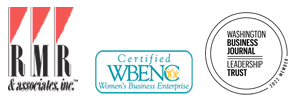10 tips for giving quotable, notable interviews: Part One
By Robyn Sachs, President & CEO of RMR & Associates, Inc.
The three worst words of wisdom for being interviewed are: “Just wing it.”
Sure, you know your topic inside and out and could give off-the-cuff answers. But doing that often leads to that sinking feeling when you see your words in print and marvel, “Did I really say that?”
When you give a presentation, you make notes and prepare slides to guide you through it, making sure you don’t get off track and forget important points. When you are being interviewed, however, the reporter is in control of the interview’s direction.
Here’s how to steer the interview where you want it to go and bring it back to the points you want to get across. These are my first five tips. Part Two will cover the remaining five.
Tip 1: Choose your top two or three messages. No more.
An interview is your chance to get your message out, but it’s easy to get sidetracked when answering question after question, being interrupted or sitting under bright lights while being recorded. Ask yourself in advance: What are the three main points you want to leave people with? Then, when answering the reporter’s questions, always bring the answer back to one of your main points. Try to smooth the transition from your answer to a key point. For example, “Yes, you’re right about that, which is why our philosophy has always been to put customers first.”
Tip 2: List the likely questions. Especially the tough ones.
You know the reason you are being interviewed, so you also know most of the questions you’ll be asked. Make a list of them and answer them conversationally and without industry jargon. Then think of the toughest questions you could be asked and answer those in a way you wouldn’t mind if you were quoted. It’s great if you can get a list of questions in advance, but that doesn’t mean the interviewer won’t throw in a few more at the last minute.
Some questions are obvious. If you have a new product, make sure you know all its details: features, benefits and why people should care. If you have a difficult issue in the news, like layoffs or an unexpectedly bad quarter, seek advice on how to reply from a PR person or lawyer.
Tip 3: Research, research, research.
Study both the topic and the reporter. Uncover interesting facts others have not reported and bring them with you to the interview on a few notecards. This makes you look prepared (and you are), but not as if you’ve written a speech, the way a large piece of paper would. Look at articles or videos the reporter has done and note their approach and style. Do they start with a shocking fact? Do they like to catch their interviewee off guard? Know what you’re getting yourself into and prepare how you will handle it.
Tip 4: Back up your points with facts and sources.
For any statistic or fact you give, make sure you know its source and be prepared to reveal it if asked. It’s fine to have notes with you and check them when you need to be certain of accuracy. Better to be seen checking your notes than to be quoted giving incorrect data. Keep a firm grip on your notes and don’t lay them on the table next to you. Once the reporter leans in and says, “May I see that?” you have lost control.
Tip 5: Prepare a relevant anecdote that’s yours alone.
Pertinent anecdotes make interviews more interesting and memorable while showcasing your sense of humor, humanity and down-to-earth quality. Rather than, “Have you heard the one about…?” offer one you know they haven’t heard because it’s your anecdote, about something in your experience. If you have been interviewed before, come up with a different anecdote for each interview. In your busy life and career, you surely have many stories to share. Of course, be sure the stories you tell are ones you won’t regret revealing when you see or hear them repeated!
Conclusion
Practice these tips at least a day before your interview so you don’t feel rushed. The more you research, prepare and practice, the more comfortable you will be. Don’t worry if you make mistakes during the interview; that just makes you seem more “real.”
Look for the next five tips in Part Two – coming soon!

